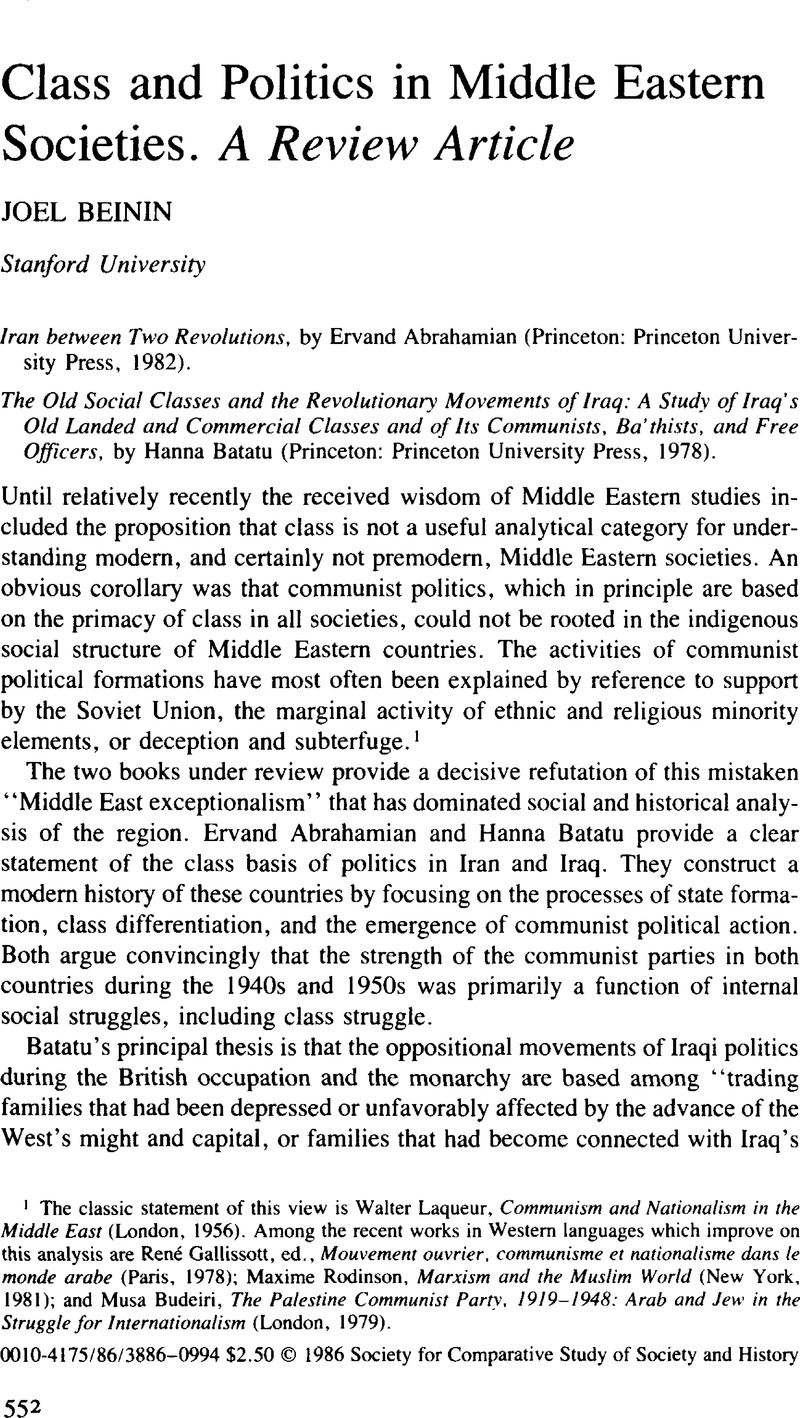Article contents
Class and Politics in Middle Eastern Societies. A Review Article
Published online by Cambridge University Press: 03 June 2009
Abstract

- Type
- The Achievements of Revolutions
- Information
- Copyright
- Copyright © Society for the Comparative Study of Society and History 1986
References
1 The classic statement of this view is Walter Laqueur, Communism and Nationalism in the Middle East (London, 1956)Google Scholar. Among the recent works in Western languages which improve on this analysis are Gallissott, René, ed., Mouvement ouvrier, communisme et nationalisme dans le monde arabe (Paris, 1978)Google Scholar; Rodinson, Maxime, Marxism and the Muslim World (New York, 1981)Google Scholar; and Budeiri, Musa, The Palestine Communist Party, 1919–1948: Arab and Jew in the Struggle for Internationalism (London, 1979).Google Scholar
2 Although a fair amount has been written on this subject, the literature is rooted in a perspective that emphasizes Soviet manipulation of the Middle Eastern parties. Some of the important examples are Shamir, Shimon, “The Marxists in Egypt: The ‘Licensed Infiltration’ Doctrine in Practice,” in The USSR and the Middle East, Shamir, S. and Confino, M., eds. (Jerusalem, 1973)Google Scholar; and Binder, Leonard, “The Failure of the Egyptian Left,” Asian and African Studies, 14 (1980), 20–34.Google Scholar
- 1
- Cited by


